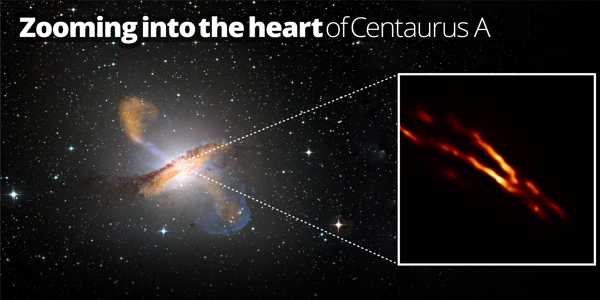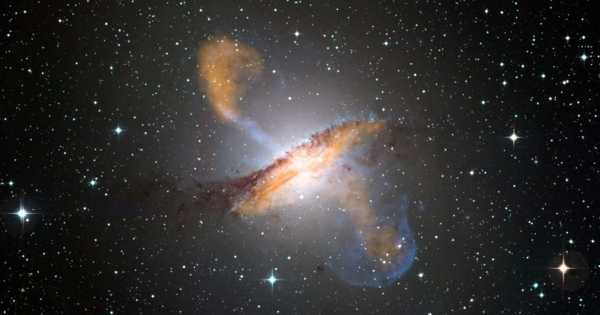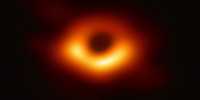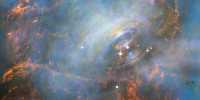Centaurus A is one of the largest and brightest objects in the night sky at radio wavelengths. Centaurus A has been studied extensively across the entire electromagnetic spectrum by a variety of radio, infrared, optical, X-ray, and gamma-ray observatories since it was identified as one of the first known extragalactic radio sources in 1949.
The Event Horizon Telescope (EHT) Collaboration, known for capturing the first image of a black hole in the galaxy Messier 87, has now imaged the heart of the nearby radio galaxy Centaurus A in unprecedented detail. The astronomers have pinpointed the location of the central supermassive black hole and revealed how a massive jet is formed. Surprisingly, only the jet’s outer edges appear to emit radiation, calling into question our theoretical jet models. This research, led by Michael Janssen of the Max Planck Institute for Radio Astronomy in Bonn and Radboud University Nijmegen, was published in Nature Astronomy.
Centaurus A is one of the largest and brightest objects in the night sky at radio wavelengths. Centaurus A has been studied extensively across the entire electromagnetic spectrum by a variety of radio, infrared, optical, X-ray, and gamma-ray observatories since it was identified as one of the first known extragalactic radio sources in 1949. At the heart of Centaurus A is a black hole with a mass of 55 million suns, which is roughly halfway between the mass scales of the Messier 87 black hole (6.5 billion suns) and the one in the center of our own galaxy (about four million suns).
Astronomers have imaged the heart of the nearby radio galaxy Centaurus A in unprecedented detail. Compared to all previous high-resolution observations, the jet launched in Centaurus A is imaged at a tenfold higher frequency and sixteen times sharper resolution.
Data from the 2017 EHT observations have been analyzed in a new paper published in Nature Astronomy to image Centaurus A in unprecedented detail. “For the first time, we can see and study an extragalactic radio jet on scales smaller than the distance light travels in one day. We witness up close and personal the birth of a monstrously massive jet-propelled by a supermassive black hole “says astronomer Michael Jansen.
The jet launched in Centaurus A is imaged at a tenfold higher frequency and sixteen times the sharper resolution than all previous high-resolution observations. We can now link the vast scales of the source, which are as large as 16 times the angular diameter of the Moon on the sky, to their origin near the black hole in a region the width of an apple on the Moon when projected on the sky, thanks to the EHT’s resolving power. That is a one billion times magnification factor.

Understanding jets
Supermassive black holes in the centers of galaxies like Centaurus A feed on gas and dust drawn in by their enormous gravitational pull. As a result of this process, massive amounts of energy are released, and the galaxy is said to become ‘active.’ The majority of matter near the black hole’s edge falls in. However, some of the surrounding particles escape and are blown far out into space just before capture: Jets, one of the most enigmatic and energetic features of galaxies, are formed.
To better understand this process, astronomers have relied on various models of how matter behaves near a black hole. They do not, however, understand how jets are launched from its central region or how they can extend over scales larger than their host galaxies without dispersing. The EHT’s goal is to solve this mystery.
The new image shows that the Centaurus A-launched jet is brighter at the edges than in the center. This phenomenon is known from other jets, but it has never been seen so clearly. “We can now rule out theoretical jet models that are incapable of reproducing this edge-brightening. It’s an eye-catching feature that will help us better understand black hole jets “TANAMI leader and astrophysics professor at the University of Würzburg in Germany, Matthias Kadler, says.
Observing the Centaurus The EHT collaboration used Very Long Baseline Interferometry (VLBI), the same technique used to create the famous image of the black hole in M87, to create a galaxy with this unprecedentedly sharp resolution at a wavelength of 1.3 mm. The virtual Earth-sized Event Horizon Telescope was created by a collaboration of eight telescopes from around the world. More than 300 researchers from Africa, Asia, Europe, North and South America are involved in the EHT collaboration.
















